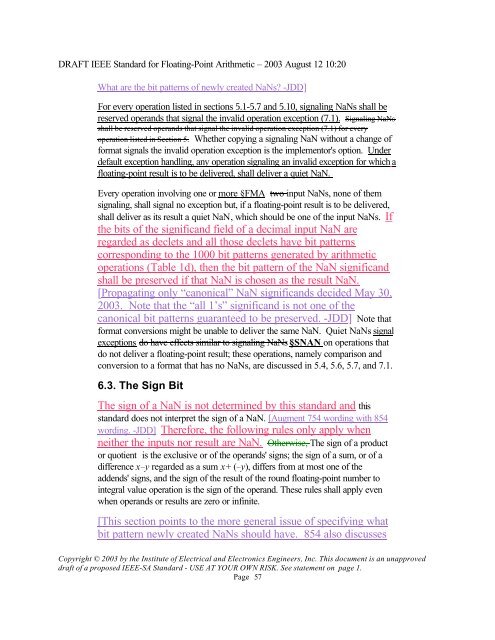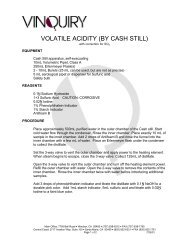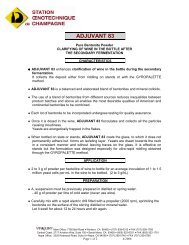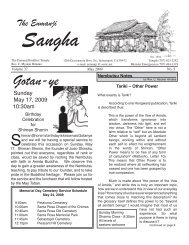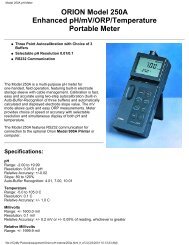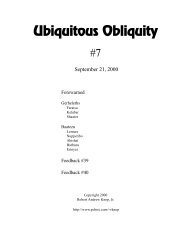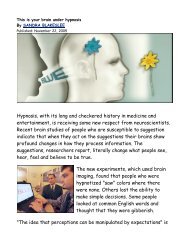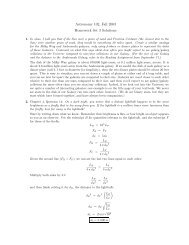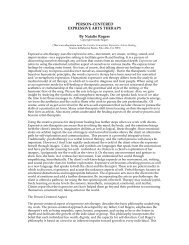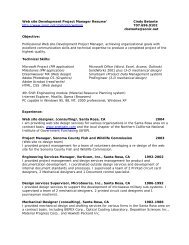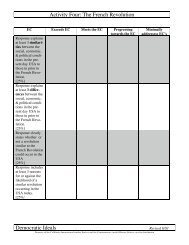DRAFT IEEE Standard for Binary Floating-Point Arithmetic - Sonic.net
DRAFT IEEE Standard for Binary Floating-Point Arithmetic - Sonic.net
DRAFT IEEE Standard for Binary Floating-Point Arithmetic - Sonic.net
Create successful ePaper yourself
Turn your PDF publications into a flip-book with our unique Google optimized e-Paper software.
<strong>DRAFT</strong> <strong>IEEE</strong> <strong>Standard</strong> <strong>for</strong> <strong>Floating</strong>-<strong>Point</strong> <strong>Arithmetic</strong> – 2003 August 12 10:20<br />
What are the bit patterns of newly created NaNs? -JDD]<br />
For every operation listed in sections 5.1-5.7 and 5.10, signaling NaNs shall be<br />
reserved operands that signal the invalid operation exception (7.1). Signaling NaNs<br />
shall be reserved operands that signal the invalid operation exception (7.1) <strong>for</strong> every<br />
operation listed in Section 5. Whether copying a signaling NaN without a change of<br />
<strong>for</strong>mat signals the invalid operation exception is the implementor's option. Under<br />
default exception handling, any operation signaling an invalid exception <strong>for</strong> which a<br />
floating-point result is to be delivered, shall deliver a quiet NaN.<br />
Every operation involving one or more §FMA two input NaNs, none of them<br />
signaling, shall signal no exception but, if a floating-point result is to be delivered,<br />
shall deliver as its result a quiet NaN, which should be one of the input NaNs. If<br />
the bits of the significand field of a decimal input NaN are<br />
regarded as declets and all those declets have bit patterns<br />
corresponding to the 1000 bit patterns generated by arithmetic<br />
operations (Table 1d), then the bit pattern of the NaN significand<br />
shall be preserved if that NaN is chosen as the result NaN.<br />
[Propagating only “canonical” NaN significands decided May 30,<br />
2003. Note that the “all 1’s” significand is not one of the<br />
canonical bit patterns guaranteed to be preserved. -JDD] Note that<br />
<strong>for</strong>mat conversions might be unable to deliver the same NaN. Quiet NaNs signal<br />
exceptions do have effects similar to signaling NaNs §SNAN on operations that<br />
do not deliver a floating-point result; these operations, namely comparison and<br />
conversion to a <strong>for</strong>mat that has no NaNs, are discussed in 5.4, 5.6, 5.7, and 7.1.<br />
6.3. The Sign Bit<br />
The sign of a NaN is not determined by this standard and this<br />
standard does not interpret the sign of a NaN. [Augment 754 wording with 854<br />
wording. -JDD] There<strong>for</strong>e, the following rules only apply when<br />
neither the inputs nor result are NaN. Otherwise, The sign of a product<br />
or quotient is the exclusive or of the operands' signs; the sign of a sum, or of a<br />
difference x–y regarded as a sum x+ (–y), differs from at most one of the<br />
addends' signs, and the sign of the result of the round floating-point number to<br />
integral value operation is the sign of the operand. These rules shall apply even<br />
when operands or results are zero or infinite.<br />
[This section points to the more general issue of specifying what<br />
bit pattern newly created NaNs should have. 854 also discusses<br />
Copyright © 2003 by the Institute of Electrical and Electronics Engineers, Inc. This document is an unapproved<br />
draft of a proposed <strong>IEEE</strong>-SA <strong>Standard</strong> - USE AT YOUR OWN RISK. See statement on page 1.<br />
Page 57


